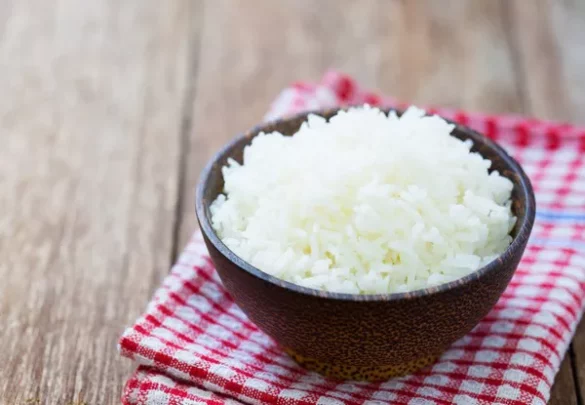In the quest for optimizing food storage methods, many home cooks and food enthusiasts have wondered about the possibility of freezing uncooked rice. Rice, a staple in many households, is a versatile and economical grain that serves as a foundation for countless meals. The question arises: Can freezing uncooked rice be a viable option for extending its shelf life? In this article, we delve into the science and practical aspects of freezing uncooked rice, exploring its impact on texture, taste, and nutritional value.
Understanding the Basics of Rice:
Before delving into the freezing aspect, it’s essential to understand the nature of rice. Rice is a cereal grain that comes in various varieties such as long-grain, short-grain, and medium-grain, each with distinct characteristics. The outer hull, bran layer, endosperm, and germ make up the structure of a rice kernel. The bran layer contains essential nutrients, while the endosperm is primarily composed of starch.
Rice is traditionally stored in cool, dry places to prevent the growth of microorganisms and maintain its quality. However, in situations where long-term storage is required, freezing becomes an intriguing option.
The Freezing Process:
Freezing is a common method of food preservation, known for slowing down enzymatic and microbial activity. At low temperatures, the water content in food turns into ice, preventing the growth of bacteria, yeast, and molds. However, not all foods respond favorably to freezing, and rice, with its unique composition, warrants a closer examination.
Texture and Taste:
One of the primary concerns when freezing uncooked rice is the potential impact on its texture and taste. Rice, especially when cooked, is valued for its fluffy, tender texture. Freezing has the potential to alter this texture due to the formation of ice crystals, which can rupture cell walls and affect the rice’s structure.
To mitigate texture issues, it is advisable to freeze rice in a manner that minimizes ice crystal formation. Portioning rice into smaller quantities and using airtight containers or vacuum-sealed bags can help prevent freezer burn and maintain the rice’s original texture.
As for taste, rice is relatively neutral, and freezing is less likely to alter its flavor significantly. However, it’s crucial to store rice away from strong-smelling foods in the freezer to avoid potential flavor absorption.
Nutritional Considerations:
The nutritional value of rice lies in its bran layer, which contains essential vitamins, minerals, and fiber. Freezing uncooked rice is unlikely to result in significant nutrient loss, as the cold temperatures slow down the enzymatic reactions responsible for nutrient degradation.
However, it’s essential to note that the overall nutritional impact depends on the storage duration. Extended freezing periods may lead to slight nutrient degradation. To maintain optimal nutritional value, it is recommended to use frozen rice within a reasonable timeframe.
Best Practices for Freezing Uncooked Rice:
Proper Packaging:
Use airtight containers or vacuum-sealed bags to prevent freezer burn.
Divide rice into smaller portions for easier thawing and to minimize texture issues.
Pre-Freezing Preparation:
Allow rice to cool to room temperature before freezing to reduce condensation inside the packaging.
Consider adding a small amount of cooking oil to the rice to help maintain moisture.
Labeling and Dating:
Clearly label the packaging with the type of rice and the date of freezing.
Use a “first in, first out” approach to ensure the consumption of older batches first.
Freezer Placement:
Store frozen rice in the coldest part of the freezer to maintain consistent low temperatures.
Keep rice away from odorous foods to prevent flavor absorption.
Thawing and Cooking Frozen Rice:
Thawing frozen rice is a crucial step in preserving its quality. Avoid thawing rice at room temperature, as this can lead to bacterial growth. Instead, opt for one of the following methods:
Refrigerator Thawing:
Place the frozen rice in the refrigerator for gradual thawing.
This method ensures a more even thaw and minimizes the risk of bacterial growth.
Microwave Thawing:
Use the microwave’s defrost setting to thaw small portions of frozen rice.
Monitor the process closely to prevent partial cooking.
Once thawed, cook the rice using your preferred method. It’s important to note that frozen rice may require slightly longer cooking times than fresh rice. Additionally, the addition of a little extra water during cooking can help restore any lost moisture.
See Also: 7 Ways to Defrost Rice & 15 Creative Ways to Use Defrosted Rice
Conclusion:
The freezing of uncooked rice can be a viable option for extending its shelf life, provided proper precautions and best practices are observed. While there may be slight changes in texture and potential nutrient degradation over extended freezing periods, the convenience of having readily available rice can outweigh these concerns.
By understanding the science behind freezing and following recommended guidelines for packaging, labeling, and thawing, home cooks can confidently incorporate frozen uncooked rice into their meal preparation routines. As with any food storage method, moderation and mindful consumption remain key to ensuring the continued enjoyment of this versatile staple.

